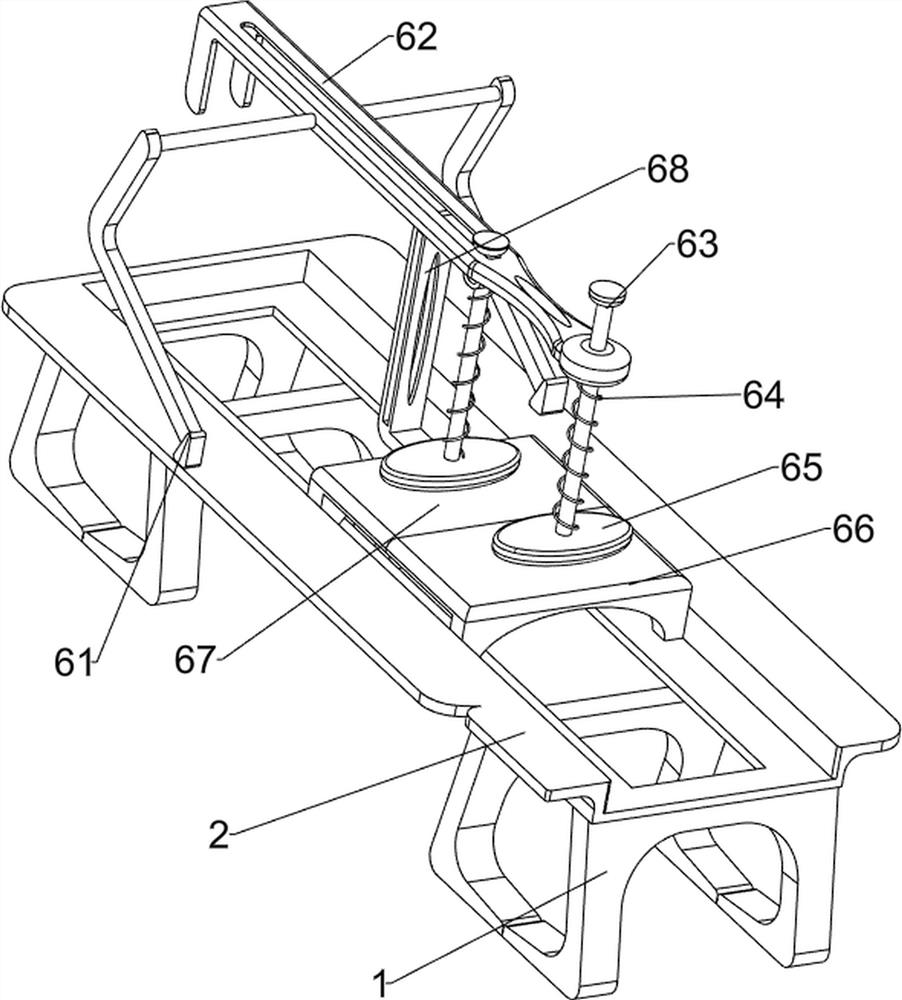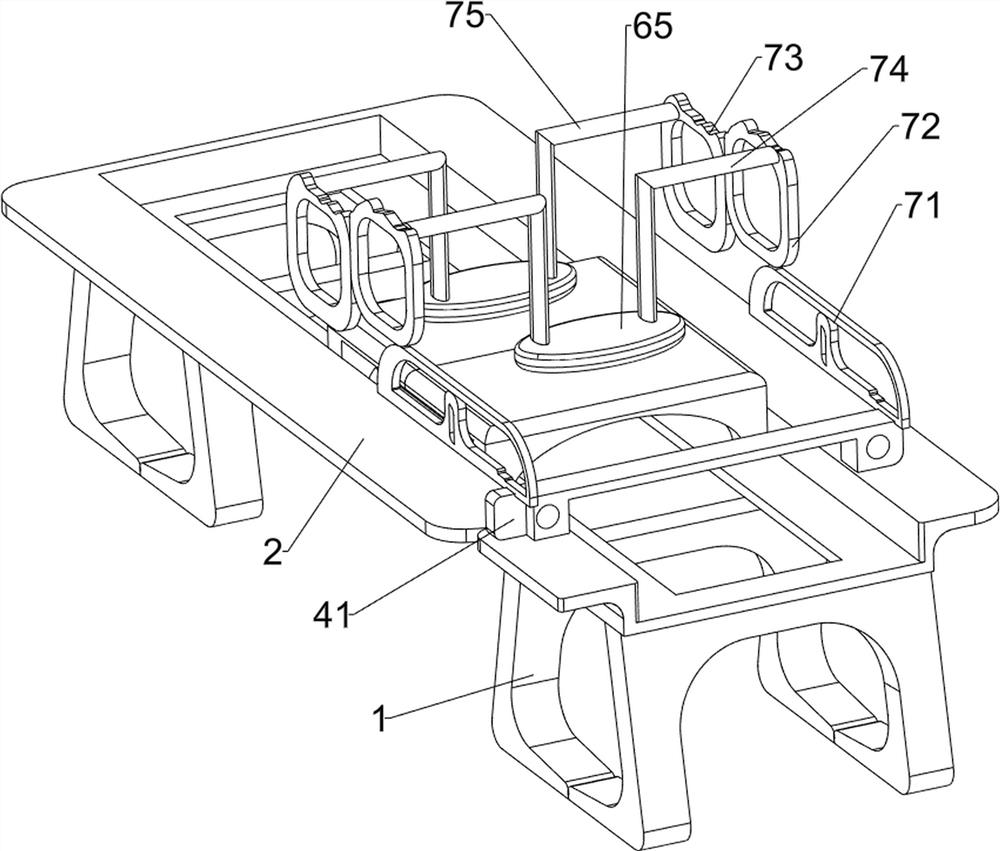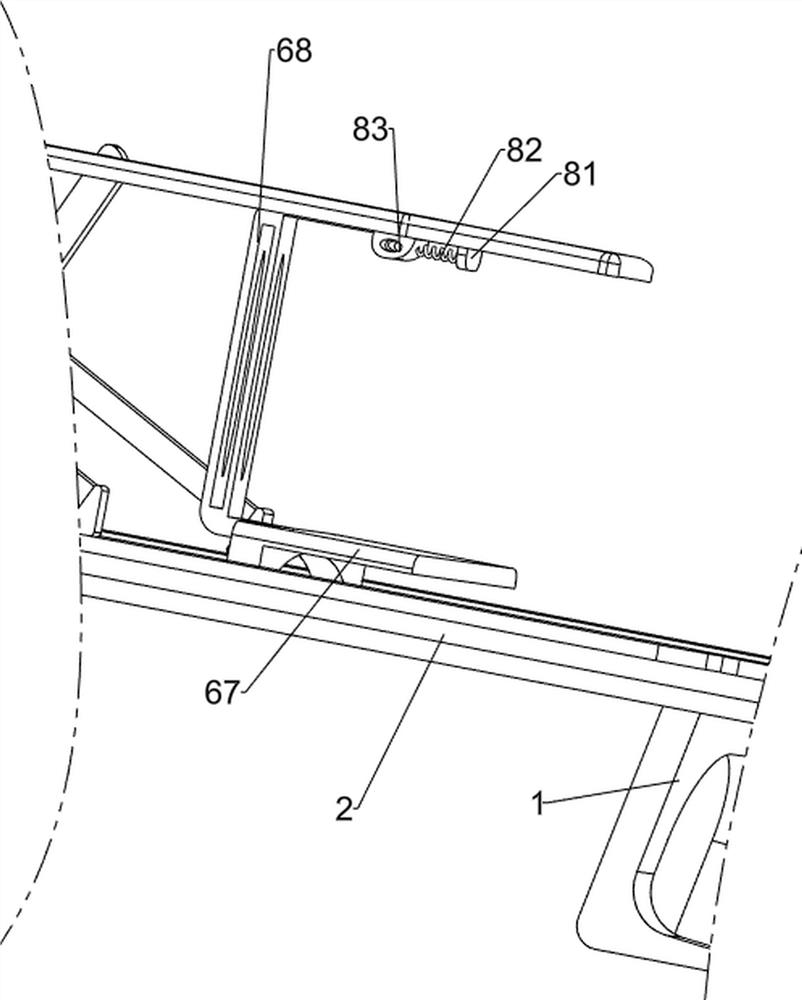Tearing force testing equipment for cloth production
A technology for testing equipment and fabrics. It is applied in the direction of applying stable tension/pressure to test the strength of materials, measuring devices, and analyzing materials. It can solve problems such as high labor intensity, easy soreness in the arms, and easy soreness.
- Summary
- Abstract
- Description
- Claims
- Application Information
AI Technical Summary
Problems solved by technology
Method used
Image
Examples
Embodiment 1
[0058] A kind of tear force testing equipment for cloth production, such as figure 1 As shown, it includes a bracket 1, a panel 2, a first support frame 3, a clamping mechanism 4 and a pushing mechanism 5. The top of the two brackets 1 is provided with a panel 2, and the top of the front side of the panel 2 is provided with a first support frame 3. The panel 2. A clamping mechanism 4 is provided on the front side, and a pushing mechanism 5 is provided on the left and right sides of the panel 2.
[0059] When people want to test the tearing force of the cloth, they can use this tearing force testing equipment for cloth production. First, the user places the cloth in the clamping mechanism 4 to clamp the cloth, and then starts the pushing mechanism 5 , push the fabric backwards, transport the fabric to carry out the tear force test, when the test is completed, close the push mechanism 5 .
Embodiment 2
[0061] On the basis of Example 1, such as figure 2 and image 3 As shown, the clamping mechanism 4 includes a push block 41, a lower pressing plate 42, a first sliding column 43 and a first spring 44, the front side of the panel 2 is slidingly provided with a push block 41, and the left and right sides of the top of the push block 41 are provided with The first sliding column 43, the lower pressing plate 42 is slidably connected between the bottoms of the two first sliding columns 43, the first spring 44 is wound around the top of each first sliding column 43, and the top of each first spring 44 is connected to the top of each first sliding column 43. The first sliding column 43 is connected, and the bottom end of each first spring 44 is connected with the lower pressing plate 42 .
[0062] The user pulls the lower pressing plate 42 upward, thereby driving the lower pressing plate 42 to move upward, the first spring 44 is compressed, the cloth is placed on the pushing block ...
Embodiment 3
[0066] On the basis of Example 2, such as Figure 4-Figure 7 As shown, an extruding mechanism 6 is also included, and the middle part of the inner wall of the panel 2 is provided with an extruding mechanism 6. The extruding mechanism 6 includes a second support frame 61, a groove block 62, a second sliding column 63, a second spring 64, Extruding block 65, first pressing plate 66, second pressing plate 67 and third fixing block 68, two second supporting frames 61 are arranged on the rear side of panel 2, groove block 62 is arranged between two second supporting frames 61 , the front middle part of the groove block 62 is slidingly provided with two second sliding columns 63, and the bottom end of each second sliding column 63 is provided with an extruding block 65, and each second sliding column 63 is wound with a second Spring 64, the top of every second spring 64 is all connected with groove block 62, and the bottom end of every second spring 64 is all connected with extrudin...
PUM
 Login to View More
Login to View More Abstract
Description
Claims
Application Information
 Login to View More
Login to View More - R&D
- Intellectual Property
- Life Sciences
- Materials
- Tech Scout
- Unparalleled Data Quality
- Higher Quality Content
- 60% Fewer Hallucinations
Browse by: Latest US Patents, China's latest patents, Technical Efficacy Thesaurus, Application Domain, Technology Topic, Popular Technical Reports.
© 2025 PatSnap. All rights reserved.Legal|Privacy policy|Modern Slavery Act Transparency Statement|Sitemap|About US| Contact US: help@patsnap.com



